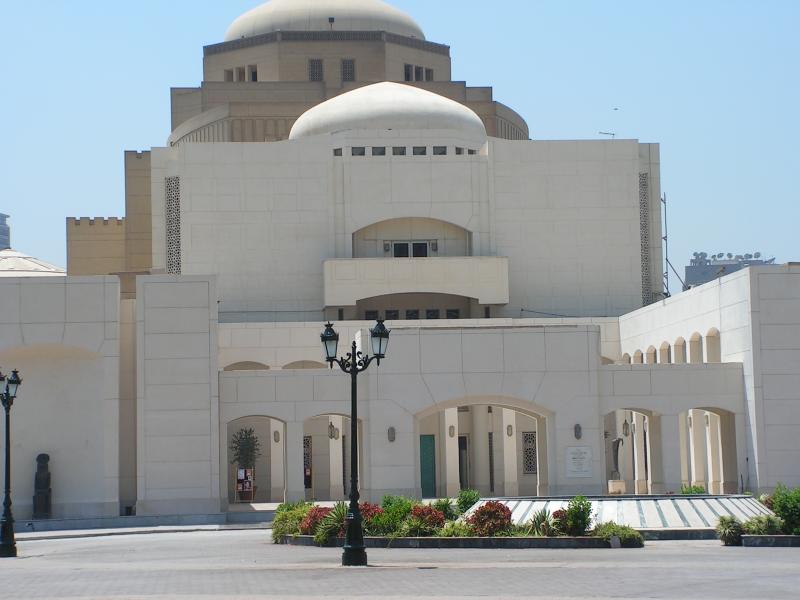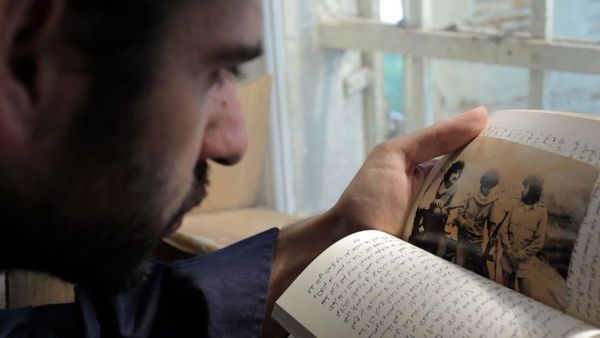By Sherif Azer and Youssef Faltas/
Literary recession still glooms over book lovers in Egypt. There are no notable sensations to mark 2010, with bestseller lists largely unchanged from last year’s, which in turn wasn’t much different from the one before it. There are, however, few exceptions.
The International Prize for Arabic Fiction, known as the Arabic Booker, selected three Egyptians in its longlist with two of them making it to the shortlist: “Brooklyn Heights” by Miral El Tahawi and “Raqsa Sharqeya” (Oriental Dance) by Khaled El-Berri. While Khairy Shalabi took a firm stance against entering the Arabic Booker at its inception, his “Astasia” sits comfortably as the third Egyptian novel on its longlist this year.
History scholar turned novelist Youssef Ziedan published his long awaited third novel “Al-Nabati” (The Nabatean)” near the end of the year which was received warmly by Egyptian readers.
Big names like Alaa Al-Aswani and Bahaa Taher offered their readers no new works this year, yet they still enjoy their spots on bestsellers’ lists. While Gamal Al-Ghitani’s novel “Men Daftr El-Eqama” (From the Book of Sojourn) was stimulating, it was quietly received in bookstores.
Young authors like Mohamed Salah Al-Azab and Ahmed Zaghloul Al-Sheti are shyly breezing new air into the literary scene with more mature works treading the relatively new ground of magical realism.
The wave of light humor works still surges with El-Shorouk publishing its first book of this genre. “Article 212” by Haitham Dabour is perhaps one of the most creative and inventive of the bunch avoiding many tired clichés. Here are what stands out from this year’s literary endeavors:
Brooklyn Heights by Miral El Tahawi
As one of most anticipated novels of 2010, Miral El Tahawi’s latest novel “Brooklyn Heights” is released with eyes on the Booker prize. The novel follows Hind, an Egyptian woman living with her child in Flat Bush Street in Brooklyn. She is running away from her previous life after her husband suddenly deserted her and her child. With a feminist overtones, Hind moves between her current life in Brooklyn and her early, mostly sad memories. The novel showcases immigrants in the United States coming from different countries and backgrounds. Some of these characters play a role in Hind’s life, leaving us with a thorough idea of their lives as immigrants in Brooklyn. The narrative moves in heavy air saturated with sadness and misery that weaves well-crafted and highly appreciated literature.
Raqsa Sharqeya (Oriental Dance) by Khaled el-Berry
The second Egyptian novel fighting its way to the Booker Prize is the third work by Khaled El-Berry, a physician born in Upper Egypt and living in London since 1999. His first book was a controversial autobiography “Life is More Beautiful than Paradise” where he told his story about joining and leaving the Muslim Brotherhood and turning to literature. Those who read El-Berry’s first novel “Negative” will realize how his writing has developed resulting in a perfect novel from a classical literature point of view. “Oriental Dance” has a coherent time and place frame and lively, realistic characters. But plot is its best aspect. It’s clear, strong and brimming with suspense, putting the novel in the thriller genre and stimulating the reader to go through the 600 pages to reach a promising end full of twists. Classic novels fans will find “Oriental Dance” a valuable and enjoyable read.
Astasia by Khairy Shalaby
One of the most significant novels by prominent novelist Khairy Shalaby, “Astasia” was warmly received by readers, and made it to the Booker’s longlist. The classic Arabic novel takes place in the countryside of Egypt’s Delta. A murder is at the center and the novel carries the name of the key character, Astasia, a bereaved mother after the mysterious murder of her son Mahfouz. Shalaby played on sectarian sensations in the novel; Astasia is a Copt living in a Muslim-dominated village, and the suspects in the murder of her son are mostly Muslims. Although the novel isn’t intended to address the sectarian tension in Egypt, as much as tackling the problems Egyptian society faces in general, the projections and symbolism running in the background can’t be undermined.
Maddah 212 (Article 212) by Haitham Dabuor
It’s the new genre of socio-political sarcasm in its best; Haitham Dabuor decides to write the actual Constitution of Egypt. This book starts from where the Egyptian Constitution ends, Article 212, Chapter 8, page 77. Dabuor saw that the Egyptians are living with an unwritten constitution that controls and regulates every single aspect of their life, so he decided to write down this constitution. This book takes the official Constitution as a backbone with almost the same sequence of the Articles, while twisting the words to fit to the tones and jokes of this generation and common people, with a noticeable influence of the Facebook culture. The book makes fun of every single aspect or character, ranging from the President of the Republic to singer Mohamed Mounir. If you are looking for smart political and social jokes, “Article 212” is your perfect pick.
Al-Nabati (The Nabatean) by Youssef Ziedan
Since his award-winning and bestselling novel “Azazel,” Ziedan’s readers have waited for “The Nabatean”, expecting it to be one of the most crafted and beautifully written novels in recent times. “The Nabatean” tells the story of Coptic Maria who marries a Nabatean man just before the advent of Islam. Ziedan takes his readers through a detailed tour of the lives of Nabateans (a tribe living in modern day Jordan and Syria). She meets a Nabatean prophet, the Nabatean, and witnesses the major changes affecting the region in that sensitive era.
Although the novel hardly compares to his “Azazel”, whether philosophically or character-wise, Ziedan’s historical details and brilliant language still render it a an intriguing read.
Ana Ra’e Baqr Waheed: Monmanamat Ghagreya (I am a Lone Cowboy: Gypsy Ornaments) by Khaled Kassab
Lately, it has been difficult to find a collection of colloquial poetry that is heartfelt and deep at the same time. Yet Kassab has succeeded in creating such a collection. In his short light poems — each a few lines long and seldom over a page — he creates intensity using paradoxes reminiscent of Salah Jaheen’s famous paradoxes in his “Rubiyat” (Quartets). In Jaheen’s verses, the revelation at the end of each poem violently overpowers the premise introduced in its beginning. In Kassab’s, such drive is not as violent and hence, it doesn’t ring as loud.
“Cowboy’s” themes are even more alluring. Pondering the limits and meaning of free will within the grand plan of the universe, the poet sees his choices as both a means of salvation and cause for frustration. Kassab breathes fresh air into this ancient dilemma that makes up the overarching theme of his “Cowboy.”
Daw’ Shafaf Yantasher be Khefa (Transparent Light Spreading Softly) by Ahmed Zaghloul Al-Sheti
There are no clear-cut messages in this short story collection, but beautiful imagery is so strong that it comfortably overpowers the meaning. Most stories are less than a few pages long, resembling internet blog posts rather than traditional short stories. Some stories focus on one scene in isolation, a technique many creative writing bloggers often follow.
Al-Sheti has mastered writing simple, compact and comprehensive stories. Each story is more like a moment or a meditative thought than an actual story with plot and characters. He leaves lot of room for interpretation and imagination. Searching for any hidden meaning in the collection’s best stories robs them of their mystique, and this is precisely what adds to their attractiveness.
Sidi Barrani by Mohamed Salah Al-Azab
As readers witnessed in his previous novel “Woqoof Motakarer” (Repeated Stops), Al-Azab is a compelling storyteller. While in “Stops”, he wrote about today’s Cairo, he takes on a different subject in “Sidi Barrani” and succeeds in changing his style to adapt to it. In this novel bordering on magical realism, he writes as the grandson who tells of the wonders witnessed by his grandfather who lived so many and diverse lives.
He effortlessly jumps in his storytelling from Sidi Barrani near Masra Matrouh near Egypt’s North Coast to early 19th century Paris to India to 20th century Cairo, connecting the stories seamlessly. He weaves the adventures of the grandfather into the life journey of the grandson, his teenage love story, and into the stories of the people of the tiny desert stop of the town he grows up in. With so many stories so well connected together, it is simply not easy to put this novel down.
Al-Lahoot Al-Araby wa Ossol Al-Onf Al-Diny (Arab Theology and the Origins of Religious Violence) by Youssef Ziedan
Youssef Ziedan the historian poses and attempts to find answers to two main questions in this histro-theological study: How did the religious heritage of the Levant (Sham) help direct the evolution of theology from Judaism to Christianity to Islam? And how did arguments amongst religious scholars and their involvement in politics lead to the emergence of violence amongst the religious masses?
Although Ziedan does not remain faithful to his claim of being theologically unbiased throughout the book, especially as he comments on the theological views of Judaism, he does advance a thought-provoking theory. Starting with the idea of “heritage continuum” — the insight that the three Abrahamic religions are in fact one religion, sharing one essence — he goes a step further to postulate that the newer religions have tried to solve the theological problems of its predecessor(s).










